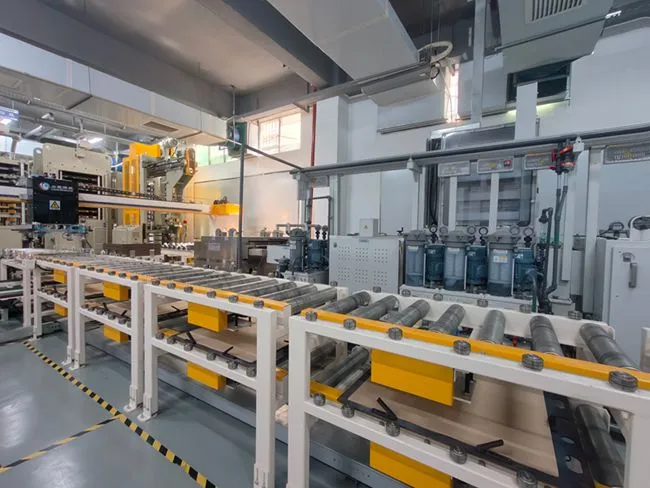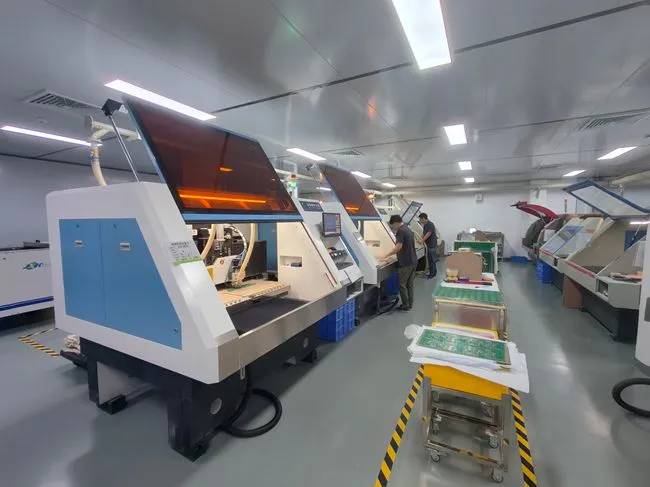Introducing Low Volume PCB Production
Low volume PCB production refers to the manufacturing of printed circuit boards in smaller quantities, typically ranging from a few units to several hundred. This approach is crucial for various industries and applications, including prototyping, product development, and specialized electronic devices. Unlike high-volume production, which focuses on mass manufacturing, low volume PCB production offers greater flexibility and customization options.
The demand for low volume PCB production has grown significantly in recent years, driven by factors such as rapid technological advancements, shorter product lifecycles, and the need for quick iterations in product development. This manufacturing approach allows companies to test and refine their designs without committing to large-scale production, reducing both financial risks and time-to-market.
Key Characteristics of Low Volume PCB Production
Low volume PCB production is characterized by several unique features that set it apart from traditional high-volume manufacturing:
- Flexibility: Manufacturers can easily accommodate design changes and modifications between production runs.
- Cost-effectiveness for small quantities: While the per-unit cost may be higher, the overall investment is lower for small batches.
- Faster turnaround times: Production cycles are typically shorter, allowing for quicker delivery of finished boards.
- Higher level of customization: Each board can be tailored to specific requirements without the constraints of mass production.
- Reduced inventory risks: Producing smaller quantities minimizes the risk of excess inventory and obsolescence.
Understanding these characteristics is essential for businesses and engineers looking to leverage low volume PCB production effectively. It allows them to make informed decisions about their manufacturing strategies and choose the most appropriate options for their specific needs.
Options for Low Volume PCB Production
When it comes to low volume PCB production, manufacturers and designers have several options at their disposal. Each method has its own advantages and considerations, catering to different project requirements and constraints. Let's explore the main options available for low volume PCB production:
Prototype PCB Services
Prototype PCB services are ideal for the initial stages of product development or when testing new designs. These services typically offer:
- Quick turnaround times, often within 24-48 hours
- Small quantities, usually 1-10 boards
- High-quality fabrication using advanced equipment
- Flexibility in design modifications between iterations
Prototype services are particularly useful for validating designs, identifying potential issues, and making necessary adjustments before moving to larger production runs.
Quick-Turn PCB Fabrication
Quick-turn PCB fabrication services cater to projects that require a balance between speed and quantity. Key features include:
- Fast production times, typically 3-5 days
- Quantities ranging from 10 to 100 boards
- Ability to handle more complex designs than prototype services
- Option for different PCB materials and specifications
This option is suitable for small production runs, urgent replacement needs, or when transitioning from prototyping to initial production phases.
On-Demand Manufacturing
On-demand manufacturing offers a flexible approach to low volume PCB production. It provides:
- Production based on actual orders, reducing inventory costs
- Scalability to accommodate varying order sizes
- Customization options for each production run
- Integration with digital manufacturing technologies
This method is particularly beneficial for businesses with fluctuating demand or those looking to minimize upfront production costs.
Small Batch Production
Small batch production bridges the gap between prototyping and full-scale manufacturing. It offers:
- Production quantities typically ranging from 100 to 1000 boards
- Cost-effectiveness for medium-sized orders
- Ability to maintain consistent quality across the batch
- Option for automated assembly processes
This approach is ideal for businesses ready to move beyond prototyping but not yet prepared for high-volume production.
Choosing the Right Option for Your Project
Selecting the most suitable low volume PCB production option requires careful consideration of various factors. To make an informed decision, project managers and engineers should evaluate the following aspects:
Project Requirements and Constraints
Begin by assessing the specific needs of your project:
- Quantity: Determine the exact number of PCBs required for your project.
- Complexity: Consider the intricacy of your PCB design, including layer count and component density.
- Timeline: Establish the urgency of your production needs and any deadline constraints.
- Budget: Evaluate your financial resources and cost limitations for the project.
Understanding these fundamental requirements will help narrow down your options and guide you towards the most appropriate production method.
Technical Specifications and Quality Standards
Ensure that the chosen production option can meet your technical requirements:
- Material specifications: Verify that the manufacturer can work with your preferred PCB materials.
- Tolerances and precision: Check if the production method can achieve the required level of accuracy.
- Quality certifications: Look for manufacturers that adhere to industry standards like IPC-6012 Class 3.
- Testing capabilities: Confirm the availability of necessary testing procedures, such as AOI and flying probe tests.
Matching your technical specifications with the capabilities of the production method ensures that the final product meets your quality standards.
Scalability and Future Production Needs
Consider your long-term production strategy:
- Potential for scaling: Assess whether the chosen method can accommodate increased production volumes if needed.
- Consistency across batches: Ensure that the production process can maintain quality and consistency for future orders.
- Flexibility for design iterations: Choose an option that allows for easy modifications in subsequent production runs, especially in low volume PCB production.
- Transition to higher volumes: Consider how smoothly you can move to larger-scale production if your product succeeds.
Thinking ahead about your future production needs can help you select an option that not only meets your current requirements but also supports your long-term goals.
Manufacturer Capabilities and Support
Evaluate potential manufacturers based on their expertise and services:
- Technical expertise: Look for manufacturers with experience in your specific industry or application.
- Design for manufacturability (DFM) support: Choose providers offering DFM analysis to optimize your designs.
- Customer service and communication: Assess the level of support and responsiveness offered by the manufacturer.
- Additional services: Consider manufacturers that provide complementary services like component sourcing or assembly.
Partnering with a capable and supportive manufacturer can significantly enhance the success of your low volume PCB production project.

Conclusion
Low volume PCB production offers a range of options to meet diverse project needs in the electronics industry. From prototype services for initial design validation to small batch production for market-ready products, each method provides unique advantages. By carefully considering project requirements, technical specifications, scalability, and manufacturer capabilities, businesses can select the most appropriate option for their low volume PCB production needs. This strategic approach ensures optimal results in terms of quality, cost-effectiveness, and time-to-market for electronic products and prototypes.
FAQ
What is considered low volume in PCB production?
Low volume typically refers to quantities ranging from 1 to 1000 boards, depending on the specific production method and manufacturer capabilities.
How long does low volume PCB production usually take?
Turnaround times can vary from 24 hours for prototypes to several weeks for small batch production, depending on the complexity and quantity of the order.
Is low volume PCB production more expensive than high volume?
While the per-unit cost is generally higher for low volume production, the overall investment is lower due to reduced setup costs and minimum order quantities.
Low Volume PCB Production: Expert Solutions | Ring PCB
Ring PCB excels in low volume PCB production, offering advanced engineering and precision manufacturing. Our state-of-the-art facility ensures high-quality results for projects of all sizes. With capabilities ranging from prototype services to small batch production, we provide tailored solutions to meet your specific needs. Experience our fast-track service, 24/7 support, and unparalleled expertise in PCB manufacturing. Contact us at [email protected] to discuss your low volume PCB production requirements with our expert team.
References
1. Johnson, A. (2022). "Advanced Techniques in Low Volume PCB Manufacturing". Journal of Electronics Production, 18(3), 45-62.
2. Smith, B., & Brown, C. (2021). "Cost-Effective Strategies for Small-Scale PCB Fabrication". IEEE Transactions on Electronics Packaging Manufacturing, 44(2), 112-128.
3. Lee, D. et al. (2023). "Comparative Analysis of Prototype PCB Services in the Electronics Industry". International Journal of Circuit Theory and Applications, 51(4), 789-805.
4. Garcia, M. (2022). "On-Demand Manufacturing: Revolutionizing Low Volume PCB Production". Electronics Design & Technology, 29(1), 33-49.
5. Wilson, E. (2023). "Quality Assurance Methodologies in Small Batch PCB Production". Quality Engineering in Electronics Manufacturing, 37(2), 201-217.






